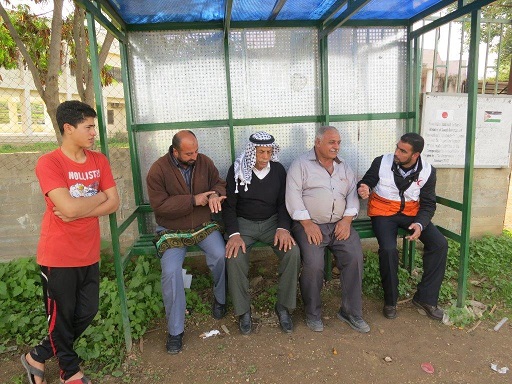
By Hanne Sorine Sorensen, IFRC
In order to reduce the risk of disasters in the North Jordan Valley in the occupied Palestinian territory (oPt), the Palestine Red Crescent Society (PRCS) has implemented a number of disaster risk reduction initiatives targeting 5,000 people in the area.
The North Jordan Valley is located in the so-called Area C in the West Bank, where movement restriction, lack of access to land and resources, lack of planning and permits for construction of infrastructure represent huge challenges for residents, as their homes, fields and pastures are not under their own control.
An assessment carried out by the PRCS shows that the population in this area is both marginalised and vulnerable. Taking the evaluation’s results into consideration, the Palestinian National Society approached a total of five communities in the North Jordan Valley and offered assistance to them.
Ein Al Baida, a low lying village in the area with a total of 1,700 residents has for years experienced serious floods in the winter. But now with the assistance of the PRCS, five kilometres long trenches have been built to divert the water towards the Jordan River instead of flooding people’s houses, fields or the mosqueas happened in 2013.
“The biggest challenges in the village are the floods which affect lives, houses and crops. We are very grateful that the PRCS has assisted us and built the trenches. The National Society helped us a lot and in 2014, we didn’t experience any flooding thanks to the trenches,” says Mr Mustafa Fuqaha who is Chairman of the village council in Ein Al Baida, where more than 85 percent of the people are dependent on agriculture and herding.
While the residents ofEin Al Baida approached the PRCS for assistance in building trenches, the 500 residents of the Kardala village asked the National Society to help them in rehabilitating the electricity system.
“Before, electricity cables were on the ground. Now they are above the ground and the electricity supply has become more stable as it is no longer affected by the rain. At the same time more soil has been made available for farming purposes,” explains Mr Basim Fuqha, a member of the Kardala village council.
In addition to the rehabilitation of the electricity system, more street lamps have been set up in the village.
“We feel safer now when walking outside in the after-dark hoursthanks to these street lamps,” says Mr Basim Fuqha, hoping that the project will expand to focus on the rehabilitation of electrical systems inside the village’s houses.
Not far from Kardala, is the village of Bardala in which 2,500 residents live and whose schools welcome Kardala students who don’t have an educational institution in their own town.
The Bardala village council asked for Palestine Red Crescent’s support in handling garbage and in constructing waiting stations to protect bus passengers from wind, rain and snow in the winter and from the scorching sun in the summer.
“The stations are for children waiting for busses to take them home to Kardala after they have attended school here in Bardala,” explains Mr MuwafaqSawafta, a member of the village council in Bardala.
The Palestine Red Crescent constructed a total of four waiting stations in Bardala. In addition, the National Society has distributed 17 big garbage containers across the village.
The Palestine Red Crescent Societies’ Disaster Reduction Project in North Jordan Valley is aimed at building community resilience and is supported by the International Federation of Red Cross and Red Crescent Societies with a donation by the British government’s Department for International Development (DIFD).
End.